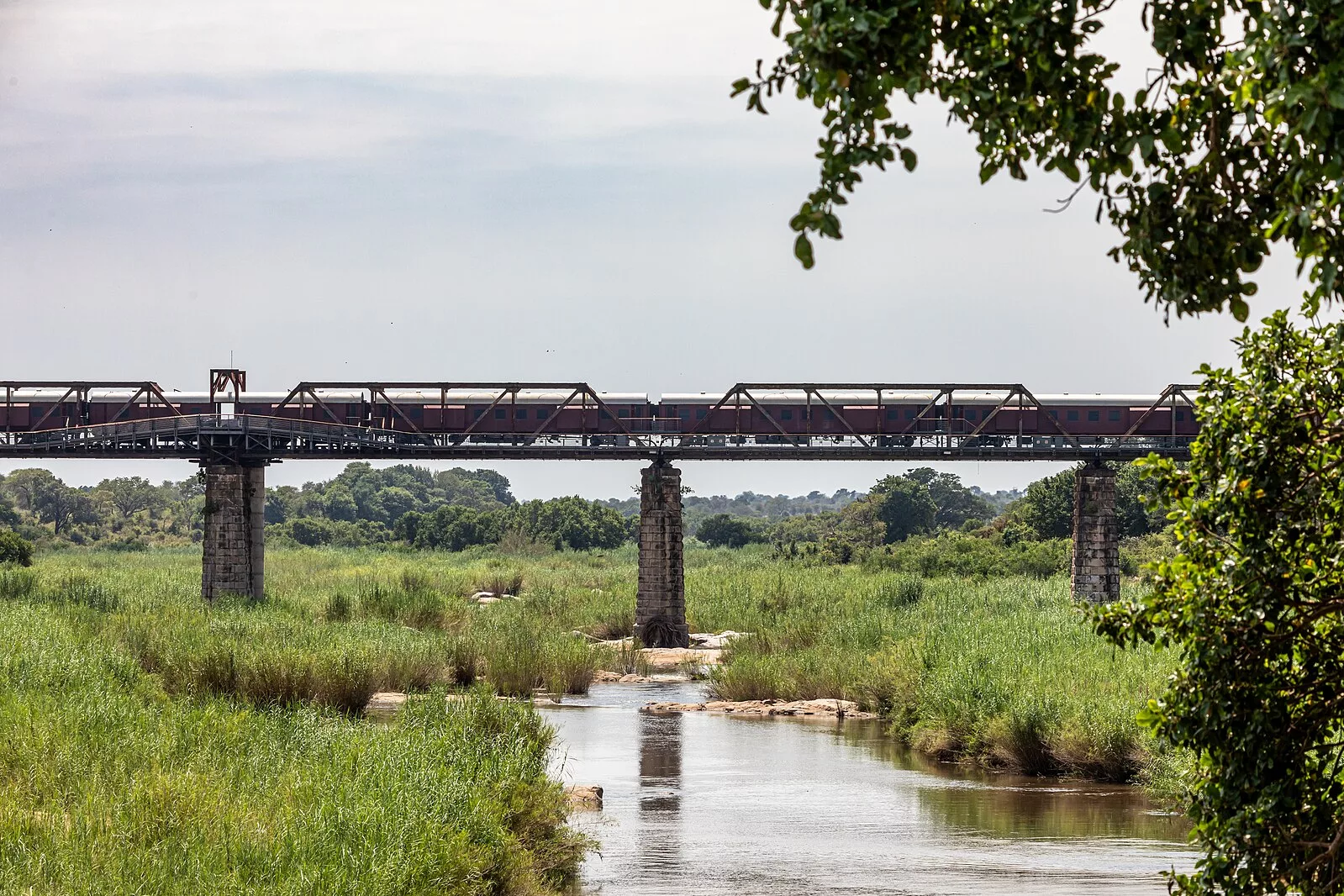Image: Wikimedia Commons
Winter is the best time for a South African safari. Here’s why the dry season offers unbeatable wildlife viewing, and where to go.
ALSO READ: Winter hikes in South Africa that are actually better in the cold
Why winter is the best season for a safari in South Africa
Summer might have the dramatic thunderstorms and lush green bushveld, but for wildlife viewing, winter is hard to beat. From May to September, much of South Africa enters its dry season. That means thinner vegetation, fewer water sources, and cooler, more comfortable temperatures — all of which combine to make winter prime safari time.
Whether you’re a first-time safari-goer or a seasoned wildlife watcher, here’s why winter should be your go-to for South Africa’s big game experiences — and where to go to make the most of it.
1. Visibility is better in the dry season
During winter, grasses die back and trees lose their leaves, revealing animals that are otherwise hidden in summer’s thick vegetation. You won’t need to squint through a wall of green to spot a leopard — instead, the sparse bush makes it easier to see predators and prey alike.
Dry pans and dams also attract animals from far and wide, concentrating wildlife activity into smaller, more viewable areas. In places like Kruger National Park, this means better chances of catching entire herds at waterholes, and predators lying in wait.
2. Cooler temperatures mean more active animals
South African summers can be sweltering — for you and the animals. During winter, with daytime highs hovering between 18°C and 25°C in most safari areas, game is often more active for longer during the day. Early mornings and late afternoons still offer the best sightings, but you won’t need to wait for dusk to see lions on the move or elephants heading to a river.
Bonus: you’ll enjoy your own game drives more too. Open safari vehicles in summer can be scorching, while winter mornings just call for a blanket and a mug of coffee.
3. Fewer bugs, less malaria risk
One of winter’s underrated benefits is the lack of insects. Tsetse flies, mosquitoes and other buzzing nuisances are far less active in the dry season. In regions like Kruger National Park and KwaZulu-Natal reserves, the reduced mosquito activity also lowers the risk of malaria — though precautions are still advised. For a malaria-free option, see below.

Image: Wikimedia Commons
Top parks and reserves for a winter safari
Kruger National Park remains a classic for a reason. Winter turns the landscape golden and sparse, and waterholes become magnets for big game. The southern section near Skukuza and Lower Sabie is especially rewarding in dry months — expect lion sightings, large elephant herds, and a strong chance of spotting all the Big Five.
Pilanesberg Game Reserve, just two hours from Johannesburg, offers excellent winter wildlife viewing without the risk of malaria. Nestled in a volcanic crater, the park is compact but teeming with diversity. Winter is also the park’s dry season, so sightings around the Mankwe Dam and Tlou Drive are often exceptional. Plus, you’ll find a good balance of self-drive options and guided tours.
Addo Elephant National Park, near Gqeberha, is another excellent winter destination. The bush here stays fairly thick year-round, but the cooler temperatures and dry conditions draw large elephant herds to the park’s waterholes. It’s also South Africa’s third-largest national park and malaria-free. You can plan your visit through SANParks.
Madikwe Game Reserve, in the North West Province, is one of South Africa’s best kept safari secrets. It’s malaria-free, home to the Big Five, and offers a more exclusive experience than the major parks. Winter safaris here are known for wild dog sightings, and many lodges offer full-board, luxury stays with expert rangers. Book through Madikwe’s official tourism page.

Image: Wikimedia Commons
What to pack for a winter safari
Days may be sunny, but early mornings and evenings can be icy, especially in open vehicles. Dress in warm layers, including a fleece, beanie, and gloves for game drives. Binoculars are essential, and a good camera with a zoom lens will help capture those crisp winter sightings. Don’t forget sunscreen — the winter sun still burns, especially at altitude or on reflection from dry grass.
South Africa’s winter transforms the bush — and for wildlife lovers, it’s the best time to visit. Clear skies, prime sightings, and fewer crowds make this season a favourite among guides and photographers alike. Whether you’re tracking lions in Kruger or watching elephants at a dam in Addo, winter brings a raw beauty to the safari experience that’s hard to match.
ALSO READ: Top scenic spots in South Africa that are worth the effort
Follow us on social media for more travel news, inspiration, and guides. You can also tag us to be featured.
TikTok | Instagram | Facebook | Twitter

